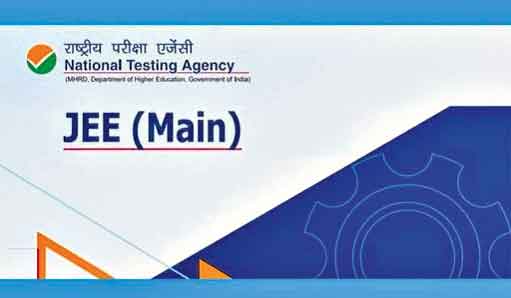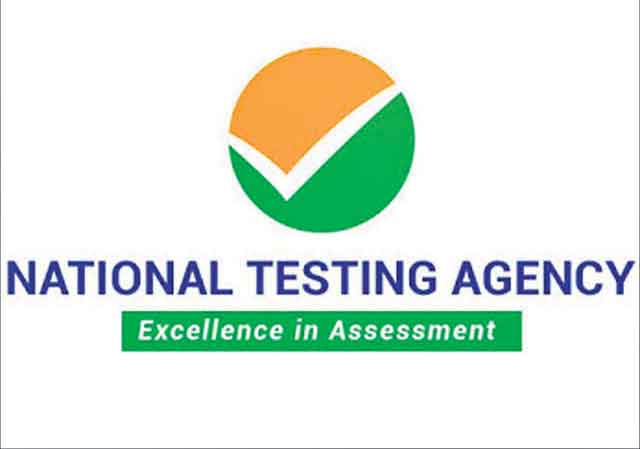JEE MAIN-2021 Analysis


Mathematics
All the papers in the July session were packed with more tricky and slightly difficult problems relative to previous sessions. Some problems were of mixed type involving three different topics. Unless the student is proficient in all the topics, it is difficult for him to attempt these questions.
Each paper had a minimum of 4 problems that were beyond the reach of average students and they might have panicked seeing these questions.
As usual, more concentration was on Calculus and Algebra. In some papers four questions were asked from Matrices, Determinants. Questions from the Binomial theorem received more weightage. But many chapters were also neglected.
Indefinite Integration was totally neglected (not a single question was asked). But, definite integrals had more weightage. As usual good weightage was given to differential equations.
In Coordinate Geometry mixed problems (i.e., problems involving more than one concept) as well direct problems were asked. The Good number of problems from vectors appeared. Some questions asked on Straight lines and Planes can be classified under Vectors as well as 3D geometry. Overall these papers were not as easy as the papers in earlier sessions. However, the point to be noted is that the problems were DIFFERENT, not very DIFFICULT. One message students would have got is that no topic can be neglected in JEE MAIN.
Ch. V. Chandrasekhar
IIT Maths Faculty
Nano IIT Academy

PHYSICS
JEE MAIN July phase was found to be easy to moderate. This was the same as that of the Feb & March 2021 phases. Assertion reason and match the column type of questions were observed in these shifts. Most of the questions were based on models from NCERT books. The difficulty level of the papers was found to be easy to moderate. Most of the questions were routine in nature. Some numeric type questions were calculation intensive. But, these were balanced by questions based purely on concepts that did not involve any calculations . Time did not pose a problem. Choice in numeric type questions greatly helped students.
Paper wise analysis
July 20th Morning Shift
The paper was easy to moderate. In this paper questions from all the topics appeared. Nearly 20% of the questions were from modern physics and 10% of questions were from heat & thermodynamics, electricity & magnetism (23%) and mechanics (30%). Around 10 questions were formula based with simple calculations ,which is an easy task to score with less effort for the majority of the students.
July 20thAfternoon Shift
Paper was moderate, nearly 10 questions were formula based with simple calculations which improved the confidence of students. Questions asked from mechanics contributed nearly 43% and from electricity and magnetism nearly 16% and 23% from modern physics. In this paper very less questions appeared from electricity and magnetism,
July 22ndAfternoon Shift
The paper had slightly lengthy calculations compared to previous shifts. Nearly 8 questions were conceptually difficult and 5 questions were lengthy to calculate. From Electricity and magnetism nearly 26%, 20% from modern physics from mechanics around 40% questions were asked which is more. In this paper there was a major deviation from the regular weightage.
The Paper was easy to moderate. Nearly 8 to 10 questions could be solved by simple calculations, and most of the questions were in a regular standard format as expected by any JEE aspirant. Modern physics contributed nearly 23% , from mechanics 36% and 26% from electricity and magnetism appeared. 3 questions from atomic physics appeared.
July 25thAfternoon Shift
Paper was moderate with mechanics having 36%, modern physics 23%, electricity and magnetism 26% of weightage. 3 questions each from current electricity and atomic physics appeared. All numerical value type questions were simple and formula based which greatly helped the students. Single choice type questions were moderately difficult
July 27thMorning Shift: Paper was moderate. Nearly 10 questions were calculation intensive and formula based. From mechanics around 33% of questions, 30% from electricity and magnetism, 20% from modern physics appeared. 3 questions alone from capacitors appeared.
July27thAfternoon Shift
Questions were tough compared to previous shifts. Nearly 12 questions were tough, involving lengthy calculations. Questions asked from mechanics contributed nearly 43% and 23% from electricity and magnetism and 16% from modern physics appeared. More weightage was there for mechanics and 3 questions alone from atomic physics appeared.
In summary, a student who is thorough with NCERT level concepts and practised systematically on easy to moderate questions would have fared very well.

Aravind Sharma
IIT Physics Faculty
Nano IIT Academy

CHEMISTRY
In this phase inorganic chemistry was given almost the same priority as both physical and organic chemistry. The Structure and bonding of compounds and magnetic properties of complexes were given more weightage in inorganic chemistry. Topics such as s-block, p-block and d-block reactivity of compounds were given very little priority. Periodic properties were tested in each and every shift. One of the most significant changes was the uses of elements. Questions from environmental chemistry were also very few.
Physical chemistry was given more weightage in almost every shift. In this phase some of the questions tested concepts along with numerical. As usual most of the physical chemistry questions given as numerical were from topics like Thermodynamics, Ionic equilibrium, Chemical equilibrium, Colligative properties and Electrochemistry. In this phase, physical chemistry questions were much easier than the previous two phases. More theoretical questions were asked in topics like Solid state, Atomic structure and Surface chemistry.
Organic Chemistry also was given as much priority as physical chemistry. Almost every question paper involved questions based on shifting of hydride, methyl etc. NTA has maintained good standards for organic chemistry questions. They didn’t cross the line that separates JEE Mains and JEE advanced. Special topics like Biomolecules and polymers were given good weightage but chemistry in everyday life was given less priority. In this phase, quantitative and qualitative analysis of organic compounds was given more weightage, which is a significant change. The Structure and bonding of organic compounds, as well as aromaticity, also was tested. Reactions of functional groups like alcohols, aldehydes, nitrogen compounds and carboxylic acids also were given more weightage.
2021 July phase chemistry papers were slightly easier than previous phases this year. The intention of NTA is very clear and that is to test the basics thoroughly. This could be a good opportunity for students to get a decent score.

U. Jagan Mohan Rao
IIT Chemistry Faculty
Nano IIT Academy
Latest Updates
దేశంలో ‘జీవన వీలునామా’ నమోదు చేసిన మొదటి హైకోర్టు?
క్యారెట్ మొక్క ఎన్ని సంవత్సరాలు జీవిస్తుంది?
ప్రపంచ ప్రసిద్ధి అగాధాలు – ఐక్యరాజ్యసమితి లక్ష్యాలు
అణు రియాక్టర్లలో న్యూట్రాన్ల వేగాన్ని తగ్గించేందుకు ఉపయోగించే రసాయనం?
దేశాల అనుసంధానం.. వాణిజ్య అంతఃసంబంధం
కణ బాహ్య జీర్ణక్రియ
ఇంటి పని వద్దన్నవారు.. స్వీయ శిక్షణ ఉండాలన్నవారు
జీవావరణ వ్యవస్థకు కావలసిన మూలశక్తి దారులు?
మౌజియన్ అనే గ్రీకు పదానికి అర్థం?
సమాజ మేధో కేంద్రాలు.. నాగరికతకు చిహ్నాలు






